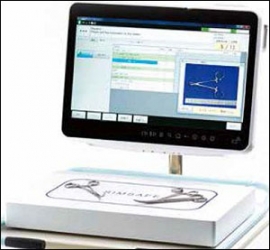Hospital Tags Surgical Tools, Cuts Costs

The management of surgical instruments poses a unique challenge to health-care workers. The tools are small and easy to lose when being cleaned or sanitized, or during use in surgery, yet a mistake related to managing tools could prove devastating to a patient's health. An unsterilized tool could cause an infection, while in rare cases, tools may be left inside a patient following surgery. Two Japanese hospitals have installed a radio frequency identification system that tracks surgical tools being used on a patient, during cleaning and sterilization, and while in storage, thereby reducing the risk of errors to zero, says the technology provider, KRD Corp. (KRDC).
Shimane University Hospital was the first to adopt KRDC's Surgical Instruments Safety System (SIMSAFE) in 2011, and the Japanese Red Cross Wakayama Medical Center followed with a similar installation in 2013. Next year, Kochi Medical School Hospital will become the third Japanese health-care provider to deploy the SIMSAFE system.
A SIMSAFE RFID tag was welded to each of Shimane University Hospital's surgical instruments.
Shimane University Hospital, a 600-bed facility located in Izuma City, underwent a reconstruction and expansion in 2011, and chose at that time to install an RFID solution to track its surgical instruments. Since then, the hospital told KRDC, the technology has brought surgical-tool management errors to an end, while reducing the amount of time employees spend searching for a particular surgical instrument from one or two hours to a few minutes. SIMSAFE, says Tsutomu Sawa, KRDC's VP of development, makes it "possible to know whether and when a particular surgical instrument comes back from the operating room."
During the past year, Shimane University Hospital has also implemented a data-analysis function in the SIMSAFE software, enabling the facility to determine which surgical tools are being used and which are not. The software has reduced the number of instruments the hospital needs in inventory by about 20 percent, thereby making it more efficient for personnel to locate the tools they require and reducing the quantity of new tools it needs to buy.
Shimane University Hospital conducts approximately 20 surgical procedures daily. The hospital has 190,000 surgical tools, including scalpels, pins and clamps of various sizes for specific types of operations. The tools are stored in Shimane's central supply room, which houses five machines for washing tools and eight for sterilizing them. These instruments are packed in metal containers that serve as kits for specific kinds of procedures. Since some tools may be removed from a container during surgery, while others might not be used, they must be carefully accounted for after each procedure, and must be returned to the container and eventually be resterilized for reuse during another operation.
Prior to the RFID system's installation, the facility reports, tracking each tool's location and status was a manual and time-consuming process. In some cases, a tool might end up missing, and staff members had to search for it in the operating room or the cleaning and sterilization area.
Source: www.rfidjournal.com



xvcvcxvvxcv
Read More